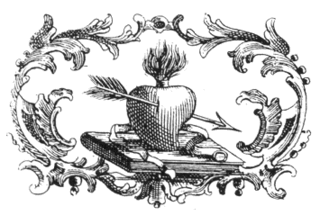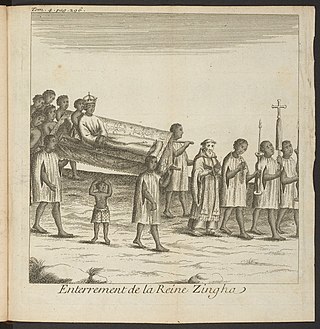
The Franciscans are a group of related mendicant Christian religious orders within the Catholic Church. Founded in 1209 by the Italian saint Francis of Assisi, these orders include three independent orders for men, orders for nuns such as the Order of Saint Clare, and the Third Order of Saint Francis open to male and female members. They adhere to the teachings and spiritual disciplines of the founder and of his main associates and followers, such as Clare of Assisi, Anthony of Padua, and Elizabeth of Hungary. Several smaller Protestant Franciscan orders exist as well, notably in the Anglican and Lutheran traditions.

The Order of Friars Minor Capuchin is a religious order of Franciscan friars within the Catholic Church, one of three "First Orders" that reformed from the Franciscan Friars Minor Observant, the other being the Conventuals (OFMConv). Franciscans reformed as Capuchins in 1525 with the purpose of regaining the original Habit (Tunic) of St. Francis of Assisi and also for returning to a stricter observance of the rule established by Francis of Assisi in 1209.
The Fraticelli or Spiritual Franciscans opposed changes to the rule of Saint Francis of Assisi, especially with regard to poverty, and regarded the wealth of the Church as scandalous, and that of individual churchmen as invalidating their status. The Fraticelli were declared heretical in 1296 by Boniface VIII.

Bernardino de Sahagún, OFM was a Franciscan friar, missionary priest and pioneering ethnographer who participated in the Catholic evangelization of colonial New Spain. Born in Sahagún, Spain, in 1499, he journeyed to New Spain in 1529. He learned Nahuatl and spent more than 50 years in the study of Aztec beliefs, culture and history. Though he was primarily devoted to his missionary task, his extraordinary work documenting indigenous worldview and culture has earned him the title as “the first anthropologist." He also contributed to the description of Nahuatl, the imperial language of the Aztec Empire. He translated the Psalms, the Gospels, and a catechism into Nahuatl.

The Kingdom of Loango was a pre-colonial African state, during approximately the 16th to 19th centuries in what is now the western part of the Republic of the Congo, Southern Gabon and Cabinda. Situated to the north of the more powerful Kingdom of Kongo, at its height in the 17th century Loango influence extended from Cape St Catherine in the north to almost the mouth of the Congo River.

The Kingdom of Kongo was a kingdom in Central Africa. It was located in present-day northern Angola, the western portion of the Democratic Republic of the Congo, Southern of Gabon and the Republic of the Congo. At its greatest extent it reached from the Atlantic Ocean in the west to the Kwango River in the east, and from the Congo River in the north to the Kwanza River in the south. The kingdom consisted of several core provinces ruled by the Manikongo, the Portuguese version of the Kongo title Mwene Kongo, meaning "lord or ruler of the Kongo kingdom", but its sphere of influence extended to neighboring kingdoms, such as Ngoyo, Kakongo, Loango, Ndongo, and Matamba, the latter two located in what is Angola today.
The Recollects were a French reform branch of the Friars Minor, a Franciscan order. Denoted by their gray habits and pointed hoods, the Recollects took vows of poverty and devoted their lives to prayer, penance, and spiritual reflection. Today, they are best known for their presence as missionaries in various parts of the world, most notably in early Canada.

The Order of Saint Augustine, abbreviated OSA, is a religious mendicant order of the Catholic Church. It was founded in 1244 by bringing together several eremitical groups in the Tuscany region who were following the Rule of Saint Augustine, written by Saint Augustine of Hippo in the fifth century.

The Catholic Church arrived in the Kingdom of Kongo shortly after the first Portuguese explorers reached its shores in 1483. Portuguese left several of their own number and kidnapped a group of Kongo including at least one nobleman, Kala ka Mfusu, taking them to Portugal where they stayed a year, learned Portuguese and were converted to Christianity. The group was returned to Kongo in 1485 and Kala ka Mfusu led a royal mission from Kongo's manikongo, Nzinga a Nkuwu to Portugal. Following their arrival in late 1486 the embassy stayed nearly four years in Lisbon with the monks of Saint John the Baptist. There they studied Christianity and Portuguese with Vicente dos Anjos, and began the start of a Kongolese version of Christianity.

Giovanni Antonio Cavazzi da Montecuccolo (1621–1678) was an Italian Capuchin missionary noted for his travels in 17th century Portuguese Angola and his lengthy account of local history and culture as well as a history of the Capuchin mission there.
John K. Thornton is an American historian specializing in the history of Africa, the African Diaspora and the Atlantic world. He is a professor in the history department at Boston University.
Dionigi di Borgo San Sepolcro OESA was an Augustinian friar who was at one time Petrarch's confessor, and who taught Boccaccio at the beginning of his education in the humanities. He was Bishop of Monopoli in Apulia. He was surnamed, not uncommonly for the trecento, for the town in which he was born, now Sansepolcro in Tuscany. His family name was de' Roberti, which no longer exists. Dionigi is the Italian form of Dennis, Latin Dionysius.
Matteo Serafini was the co-founder and first Superior-General of the Order of Friars Minor Capuchins, the principal branch of the Franciscans issued from the Reform of the Observance.

Giuseppe Maria Bernini, who lived from 1709–1761, was an Italian Capuchin missionary, physician and Orientalist. His efforts led to the establishment of the northern Indian subcontinent's oldest Christian community—the Bettiah Christians. Bernini was the first European to author tracts in Hindustani (Hindi-Urdu), as well as to translate Indian classics from Sanskrit into Italian.
An Historical Description of Three Kingdoms: Congo, Matamba, and Angola is an extensive work written by Giovanni Antonio Cavazzi da Montecuccolo, an Italian Capuchin missionary, over a long period while working as a missionary in Angola, between 1654 and 1677.
Gaspar da Cruz was a Portuguese Dominican friar born in Évora, who traveled to Asia and wrote one of the first detailed European accounts about China.
Caesar of Speyer was an early Franciscan who was a companion of Francis of Assisi, and the first Provincial Minister of the Franciscans in Germany. After the death of Francis, he was a leader of the zelanti faction, opposed to what they considered a relaxation of the Rule as promulgated by the founder.
Marco della Tomba, O.F.M. Cap. (1726-1803), was an Italian Capuchin friar, who served as a missionary in North India, then called by its Persian name of Hindustan. He was a part of the Mission to Tibet financed by the Sacred Congregation of Propaganda Fide, which still supervises the missionary activity of the Catholic Church throughout the world.
Ilarione da Bergamo (1727?-1778) was an Italian Capuchin friar, who wrote an account of his travels in New Spain 1761–1768. The narrative remained in manuscript form until its publication in Italian in 1976. A translation to English was published in 2000. He likely took his name from the town of Bergamo, near Milan; little is known of his life beyond his religious profession and his travel narrative.

Marcellino d'Atri was a Capuchin missionary from Atri in the Kingdom of Naples who spent several years in the Kingdom of Kongo. His memoirs give much valuable information about the region around the end of the 17th century, although they betray the typical prejudices about Africans of a European at the time.









